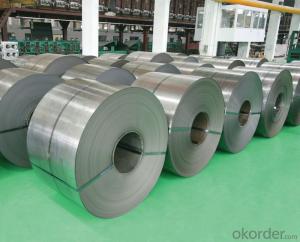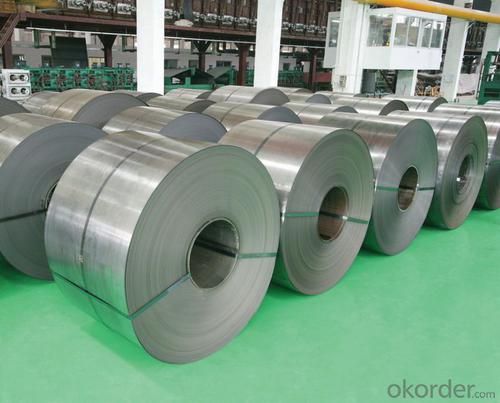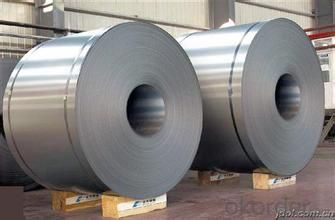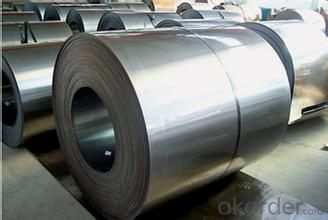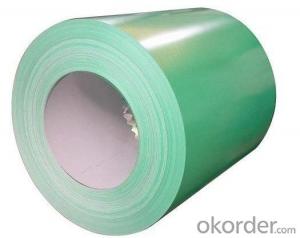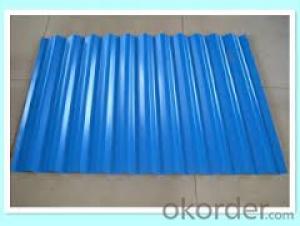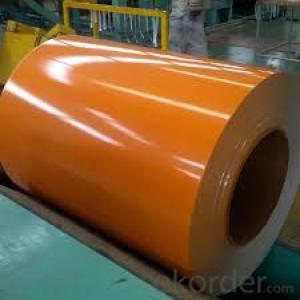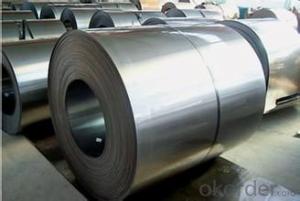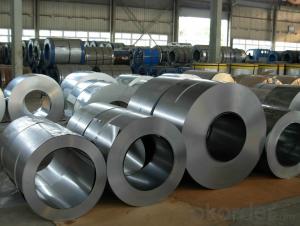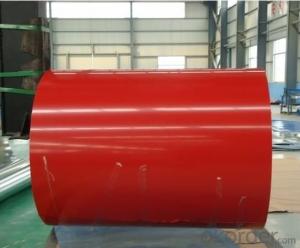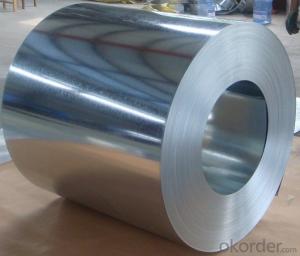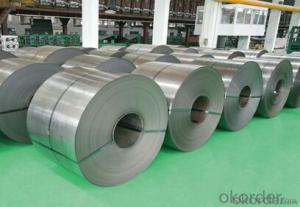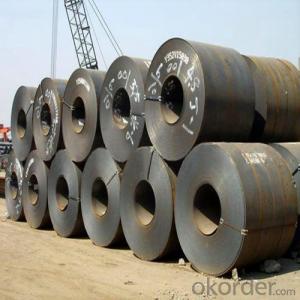Cold Rolled Steel Coil of High Quality with Different Width
- Loading Port:
- Shanghai
- Payment Terms:
- TT OR LC
- Min Order Qty:
- 100 m.t.
- Supply Capability:
- 10000 m.t./month
OKorder Service Pledge
OKorder Financial Service
You Might Also Like
1.Structure of Cold Rolled Steel Description:
The raw material of cold rolled steel coil/sheet is high quality hot rolled product, and after pickling continuous rolling, degreasing, annealing,skin pass,slitting and cut to length line etc. Along with it many kinds of new technology and new process of global cold rolling production have been applied. Therefore the quality of the goods could be guaranteed. The product is widely used in outdoor and interior decoration, furnishing manufacturing, home appliance, automobile etc.
2.Main Features of the Cold Rolled Steel:
• Excellent process capability
• Smooth and flat surface
• Workability, durability
• Excellent heat resistance performance
• High strength
• Good formability
• Good visual effect
3.Cold Rolled Steel Images

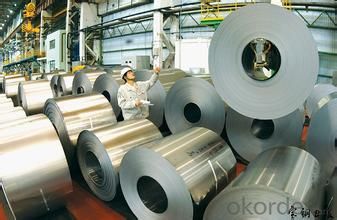
4.Cold Rolled Steel Specification
Standard:AISI,ASTM,DIN,GB,JIS,JIS G3302 ASTM 653M EN10142
Grade: Q195~Q345
Thickness: 0.16mm~1.5mm,0.16-1.5mm
Width: 1250,600-1250mm
Coil weight:3-12 MT
Coil ID:508/610mm
Chemical composition:
C | Si | Mn | Cr | Ni | P | S |
0.150 | 0.476 | 11.231 | 12.50 | 0.900 | 0.039 | 0.010
|
5.FAQ of Cold Rolled Steel
We have organized several common questions for our clients,may help you sincerely:
1.How about your company?
A world class manufacturer & supplier of castings forging in carbon steel and alloy steel,is one of the large-scale professional investment casting production bases in China,consisting of both casting foundry forging and machining factory. Annually more than 8000 tons Precision casting and forging parts are exported to markets in Europe,America and Japan. OEM casting and forging service available according to customer’s requirements.
2.How to guarantee the quality of the products?
We have established the international advanced quality management system,every link from raw material to final product we have strict quality test;We resolutely put an end to unqualified products flowing into the market. At the same time, we will provide necessary follow-up service assurance.
3. How long can we receive the product after purchase?
Usually within thirty working days after receiving buyer’s advance payment or LC. We will arrange the factory manufacturing as soon as possible. The cargo readiness usually takes 15-25 days, but the shipment will depend on the vessel situation.
4.Which payment term we can do?
L/C at sight or T/T.
5.Where is our factory?
Near by Tianjin and Shanghai
6.How about the quality of our product?
Before shipment, we have special test to control the quality.
- Q: I am using mild steel wire (very thin and bendable) for an art project, and would like to know if using a soldering torch is effective enough to get the job done. Or do I have to use a butane torch to heat the metal?BTW, is it better to use soft or hard solder?
- Soldering Steel
- Q: How is the thickness of a steel coil measured?
- The thickness of a steel coil is typically measured using a gauge, which is a specialized tool specifically designed for measuring the thickness of materials. The gauge is pressed against the coil, and the reading on the gauge indicates the thickness of the steel.
- Q: How much money do you think I could get per lb if I wanted to trade in scrap steel material?
- Scrap steel is usually traded per ton. Average steel prices fluctuate on a daily basis. General prices for scrap steel are around $100 - $200 per ton. For daily scrap steel prices check the source below
- Q: doesnt steel rust?
- Stainless steel is regular steel that has had nickel added in the manufacturing process. Because of the nickel it prevents rust.
- Q: How do steel coils contribute to the aerospace manufacturing industry?
- Steel coils are essential in the aerospace manufacturing industry as they are used to produce various components, such as aircraft bodies, wings, and landing gear. These coils provide the necessary strength, durability, and resistance to extreme conditions required for aerospace applications. Additionally, steel coils can be easily shaped and welded, enabling manufacturers to create complex and precise structures, thereby enhancing the safety and efficiency of aircraft.
- Q: How are steel coils used in the production of packaging materials?
- Steel coils are used in the production of packaging materials as they are commonly used to manufacture metal cans, containers, and drums. These coils are processed and shaped into various forms to create sturdy and durable packaging options for a wide range of products, such as food, beverages, chemicals, and industrial goods.
- Q: What are the different methods of surface inspection for steel coils?
- Steel coils can undergo surface inspection using various methods, each with its advantages and limitations. Among the commonly used techniques are: 1. Visual Inspection: Inspectors visually examine the steel coil surface for defects like scratches, dents, or discoloration. Though subjective and reliant on inspector expertise, this method proves cost-effective for detecting obvious defects. 2. Magnetic Particle Inspection (MPI): This method involves applying a magnetic field to the coil and then iron particles on the surface. Disruptions in the magnetic field caused by defects or cracks gather the particles, making the flaws visible. MPI effectively detects surface cracks and defects not easily seen by the naked eye. 3. Eddy Current Testing (ECT): ECT, a non-destructive testing method, employs electromagnetic induction to identify surface defects in steel coils. A probe with a coil generates an alternating magnetic field near the coil surface. Changes in electrical conductivity or magnetic permeability due to surface defects lead to a change in the induced current, which can be analyzed. ECT successfully identifies cracks, corrosion, and other surface irregularities. 4. Ultrasonic Testing (UT): High-frequency sound waves are used to examine both the surface and subsurface of steel coils. A transducer sends ultrasonic waves into the steel, and the reflected waves are analyzed to detect material changes or anomalies. UT effectively identifies cracks, delaminations, or voids within the coil, providing valuable insights into the steel's structural integrity. 5. Optical Inspection: This technique utilizes advanced imaging techniques like cameras or laser scanners to capture high-resolution images of the coil surface. These images are then analyzed for defects such as scratches, pits, or irregularities. Optical inspection provides detailed information and is often used alongside other methods for a comprehensive inspection. It is important to note that each method has its limitations and may be more suitable for specific defect types or surface conditions. Therefore, a combination of these techniques is often employed to ensure a thorough and accurate inspection of steel coils.
- Q: steel can be used to do?
- I also know that jawaysteel this company, they're really good
- Q: What are the common surface treatments for galvanized steel coils?
- Some common surface treatments for galvanized steel coils include passivation, chromate conversion coating, and painting. Passivation helps to enhance the corrosion resistance of the galvanized coating, while chromate conversion coating provides additional protection and improves adhesion for subsequent paint coatings. Painting can be done to enhance aesthetics or to provide additional corrosion protection, depending on the specific requirements of the application.
- Q: Does steel have a valence number and if so, what is it?
- Steel is a mixture, so it doesn't have any valence number. On the other hand, all of the components of the steel mixture are in their elemental forms, so all the various valences are zero.
Send your message to us
Cold Rolled Steel Coil of High Quality with Different Width
- Loading Port:
- Shanghai
- Payment Terms:
- TT OR LC
- Min Order Qty:
- 100 m.t.
- Supply Capability:
- 10000 m.t./month
OKorder Service Pledge
OKorder Financial Service
Similar products
Hot products
Hot Searches
Related keywords
